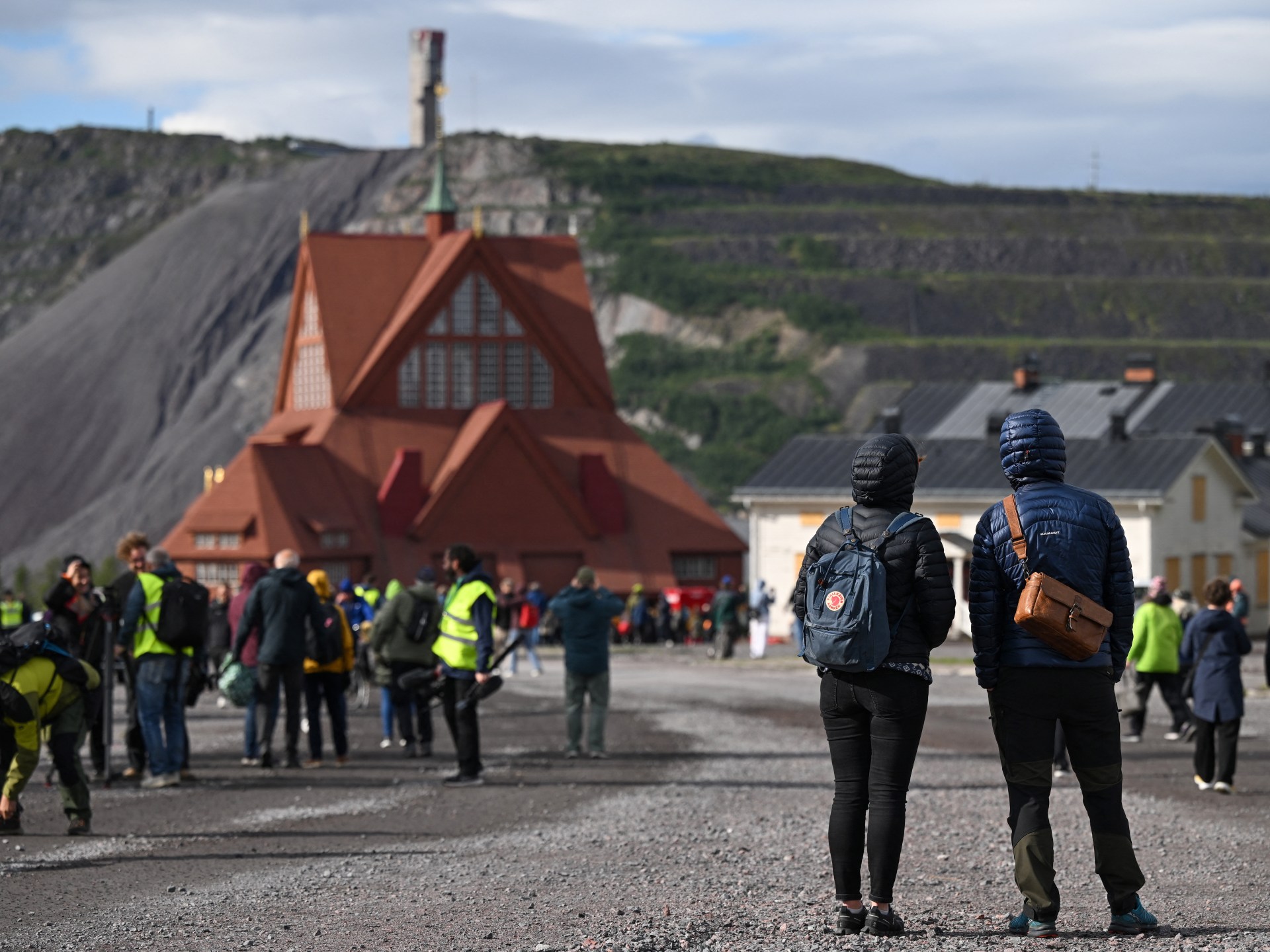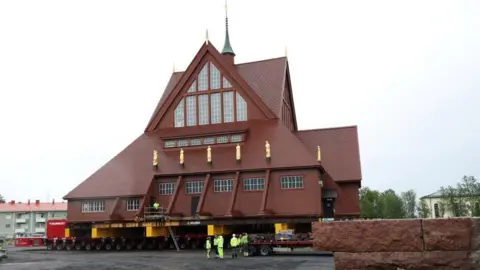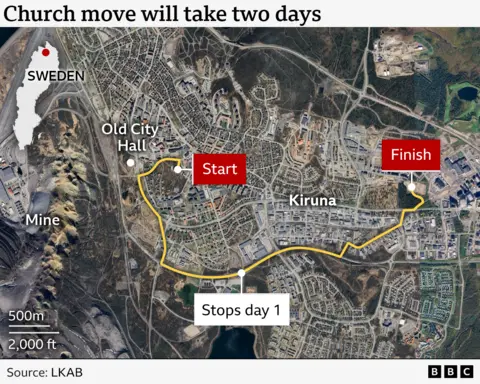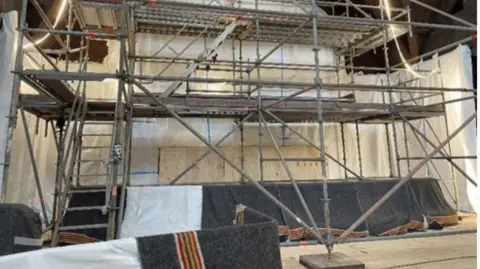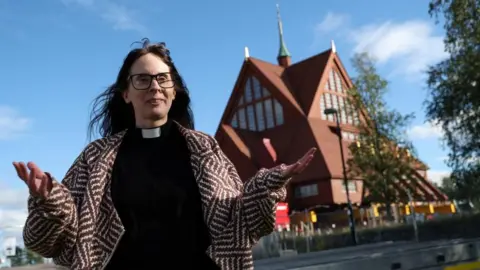Sweden moves entire church across Kiruna city for mine expansion | Mining News
Sweden’s landmark Kiruna Church begins a two-day journey to a new home, inching down an Arctic road to save its wooden walls from ground subsidence and the expansion of the world’s largest underground iron ore mine.
Workers have jacked up the 600-tonne, 113-year-old church from its foundations and hefted it onto a specially built trailer – part of a 30-year project to relocate thousands of people and buildings from the city of Kiruna in the region of Lapland.
Mine operator LKAB has spent the past year widening the road for the journey, which will take the red-painted church – one of Sweden’s largest wooden structures, often voted its most beautiful – 5km (3 miles) down a winding route to a brand new Kiruna city centre.
The journey, which begins on Tuesday, will save the church but remove it from the site where it has stood for more than a century.
“The church is Kiruna’s soul in some way, and in some way it’s a safe place,” Lena Tjarnberg, the vicar of Kiruna, said. “For me, it’s like a day of joy, but I think people also feel sad because we have to leave this place.”
For many of the region’s Indigenous Sami community, which has herded reindeer there for thousands of years, the feelings are less mixed. The move is a reminder of much wider changes brought on by the expansion of mining.
“This area is traditional Sami land,” Lars-Marcus Kuhmunen, chair of the local Gabna Sami community, said. “This area was grazing land and also a land where the calves of the reindeer were born.”
If plans for another nearby mine go ahead after the move, that would cut the path from the reindeer’s summer and winter pastures, making herding “impossible” in the future, he said.
“Fifty years ago, my great-grandfather said the mine is going to eat up our way of life, our reindeer herding. And he was right,” he added.
The church is just one small part of the relocation project.
What next?
LKAB says about 3,000 homes and approximately 6,000 people need to move. A number of public and commercial buildings are being demolished, while some, like the church, are being moved in one piece.
Other buildings are being dismantled and rebuilt around the new city centre. Hundreds of new homes, shops, and a new city hall have also been constructed.
The shift should allow LKAB, which produces 80 percent of the iron ore mined in Europe, to continue to extend the operation of Kiruna for decades to come.
The state-owned firm has brought up about two billion tonnes of ore since the 1890s, mainly from the Kiruna mine. Mineral resources are estimated at another six billion tonnes in Kiruna and nearby Svappavaara and Malmberget.
LKAB is now planning the new mine next to the existing Kiruna site.
Rare earth elements
As well as iron ore, the proposed Per Geijer mine contains significant deposits of rare earth elements – a group of 17 metals critical to products ranging from lasers to iPhones, and green technology key to meeting Europe’s climate goals.
Europe – and much of the rest of the world – is currently almost completely dependent on China for the supply and processing of rare earths.
In March this year, the European Union designated Per Geijer as a strategic project, which could help to speed up the process of getting the new mine into production.
About 5km (3 miles) down the road, Kiruna’s new city centre will also be taking shape.
“The church is … a statement or a symbol for this city transformation,” mayor Mats Taaveniku said. “We are right now halfway there. We have 10 years left to move the rest of the city.”
